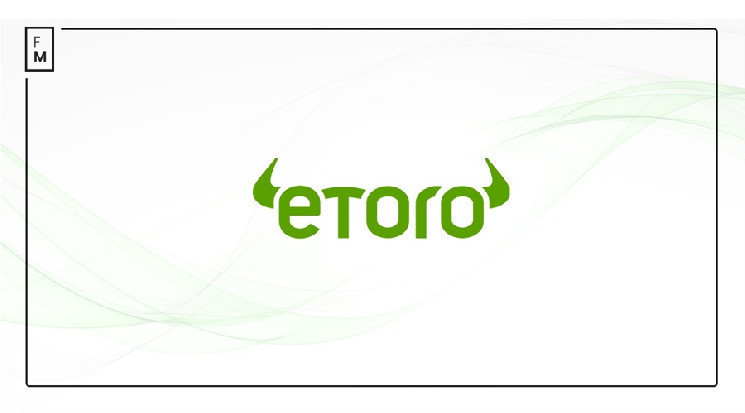Airdrops are a popular marketing tactic used by blockchain projects to reward early adopters, attract new users, and promote their tokens. By participating in airdrops, you can get free tokens just by completing simple tasks like following the project on social media or joining their Telegram group.
In this guide, we’ll cover everything you need to know about the best crypto airdrops, including how they work, how to participate, and where to find them.
Here are thebest crypto airdrops available in 2025:
- Nexus – Layer 1 blockchain designed to support mass adoption
- Sonus – A liquidity hub for the Soneium blockchain
- Wayfinder – Enabling AI agents to navigate blockchains
- Kaito AI – Analyzing social media and web3 platforms for investment insights
- Grass – DePIN network leveraging idle internet bandwidth
- Retro Bridge – Multi-chain token bridging platform
- WalletConnect – Onchain UX ecosystem
- Rainbow Wallet – A high-quality Ethereum ecosystem wallet with point rewards
DISCLAIMER: This is not investment advice. The information provided is for general information purposes only. No information, materials, services and other content provided in this article constitute a solicitation, recommendation, endorsement, or any financial, investment, or other advice.
10 best crypto airdrops: Examining the top airdrop crypto projects for 2025
Crypto airdrops are a marketing strategy used by blockchain projects to distribute free tokens to their community. Airdrops can be used to reward early adopters, attract new users, and generate buzz around a project. With that in mind, here are the best airdrops currently available to crypto enthusiasts.
1. Ethereal – Decentralized exchange for the Ethena ecosystem
Ethereal is a decentralized exchange built on the Ethena network. Ethereal supports spot trading and perpetual contracts, and uses a mixture of on-chain and off-chain elements to strike a balance between the performance typical of centralized exchanges and the security offered by decentralized exchanges.
The Ethereal exchange uses Ethena’s USDe stablecoin as its native collateral to provide a streamlined experience to users in the Ethena ecosystem. While using USDe as collateral for their trading, users continue earning the rewards associated with the USDe stablecoin. The platform has gained a considerable amount of traction already, boasting a TVL of $816 million at the time of writing.
The Ethereal project has launched a campaign called Season Zero, incentivizing users to deposit funds to the platform. In exchange, users receive points, access to new Ethereal product launches, as well as loyalty bonuses. In order to participate, users are simply required to deposit USDe stablecoins in the Ethereal deposit contract. The deposited USDe can be withdrawn at any time.
Most likely, the points earned by participants will be convertible into tokens at a future point in time, although we have to clarify that the Ethereal project hasn’t officially confirmed this. If you want to learn more about Ethereal’s Season Zero campaign, we recommend you check out the campaign’s official website.
2. Rings Protocol – Bridge and yield earning platform for Sonic
Rings is a protocol that functions as a liquidity bridge between Ethereum and the Sonic blockchain. Through Rings, users can bridge stablecoins and other Ethereum-based tokens to the Sonic blockchain and mint derivative tokens that earn yield. These yield-bearing tokens use the “sc” prefix (for example scETH).
When users mint “sc” tokens, the collateral is sent to vaults on the Ethereum blockchain operated by Veda. These vaults earn yield using established DeFi protocols such as Aave.
The Rings protocol allows users to access passive income opportunities while also having a convenient way of bridging to the Sonic ecosystem.
At the moment, the Rings project is conducting a points program where users are able to earn an allocation of Sonic’s native S tokens. The amount of points a user can earn depends on the amount of tokens they utilize, as well as the type of activity. There is a 1x multiplier for users that passively hold “sc” tokens, a 1.5x multiplier for providing liquidity in pools, a 2x multiplier for staking, and a 3x multiplier for locking tokens.
If you want to learn more about the Rings protocol airdrop, we recommend you check the project’s official documentation.
3. Nexus – Layer 1 blockchain designed to support mass adoption
Nexus is a high-performance layer 1 blockchain that’s implementing a horizontal scaling architecture to achieve massive scalability. The two main components of the Nexus network architecture are network nodes and the Nexus Orchestrator. Network nodes supply computing power to the network and run the Nexus zkVM (zero-knowledge virtual machine), while the Nexus Orchestrator service coordinates the Nexus Network and verifies the work performed by the nodes.
Users who interact with the Nexus ecosystem and contribute computing power to the network can earn NEX points, which could potentially be converted to tokens in the future.
To get started, you can head over to app.nexus.xyz and sign up. You can contribute compute to the Nexus network either through a web interface of a CLI (command-line interface).
4. Sonus – A liquidity hub for the Soneium blockchain
Sonus is an AMM (automated market maker) protocol built on the Soneium blockchain. The Sonus protocol combines Uniswap v3 with a customized incentive engine. In addition, Sonus incorporates a vote-lock governance model, allowing community members to guide the direction of the protocol.
The Sonus protocol has its own token called SONUS, and users have an opportunity to earn an allocation by interacting with the protocol. The active points program gives users the chance to engage with the platform in its early development phase and potentially gain from the distribution of SONUS tokens.
For those interested in joining Phase 2 of the points program, providing liquidity to the specified pools and maintaining active participation is the most effective approach to optimizing rewards.
5. Wayfinder – Enabling AI agents to navigate blockchains
Wayfinder is a tool that allows autonomous AI agents to access and navigate blockchain networks. Wayfinder features a growing ecosystem graph of smart contracts, which essentially functions as a map AI agents can use to identify and access smart contracts and decentralized applications they can use to achieve their goals. Notably, agents can spend cryptocurrencies in their wallets independently, without having to ask for permission when making transactions.
The Wayfinder project is part of the Echelon Prime ecosystem, which also includes the trading card game Parallel and the AI-powered survival simulation game Colony. Initially, Wayfinder was developed as a part of the core infrastructure underpinning Colony.
Wayfinder incorporates two tokens – PROMPT and PRIME. PROMPT, which Wayfinder’s utility token, provides a way to incentivize network activity and is also used to pay for transaction fees.
The project will be conducting an airdrop of PROMPT tokens, with 40% of the supply being reserved for the Echelon Prime community. While 39% of the supply will be distributed to PRIME token stakers, the remaining 1% will go to users who sign up for a free account with Wayfinder and interact with the platform.
6. Kaito AI – Analyzing social media and web3 platforms for investment insights
Kaito AI is a web3 information platform that helps users track activity on social media and web3-native platforms to stay on top of trending narratives and cryptocurrencies. The team behind Kaito AI is now developing a platform called Yaps, which tracks crypto community members on X (formerly known as Twitter) and gauges the mindshare they command.
The Yaps points program rewards users with points for their social media activity and content creation . Although no official token has been announced yet, there is speculation within the community about the possibility of a future airdrop, similar to those seen in other successful projects in the crypto industry.
By becoming a “Yapper”, users become eligible to earn points via their social media interactions, and there’s a solid chance these points will be convertible to tokens at a future point in time.
7. Grass – DePIN network leveraging idle internet bandwidth
Grass is a DePIN (decentralized physical infrastructure network) project that allows users to earn using their idle internet bandwidth. The bandwidth is used by verified institutions for use cases such as AI development. To ensure scalability and privacy, the Grass network implements zero-knowledge proofs to verify transactions.
Users can participate in the Grass network by creating an account an installing Grass node software on their computer. When running the node, users earn Grass Points, which are expected to be convertible into tokens at a future point in time. Grass also features a browser extension, which can also be used to earn rewards.
The first phase of the Grass airdrop concluded on October 2024, with 100 million tokens being distributed to over 2 million users. The Grass airdrop campaign is currently in its second phase, in which 17% of the total GRASS token supply will be distributed.
8. RetroBridge – Multi-chain token bridging platform
RetroBridge is a platform that allows users to transfer tokens between different blockchain platforms, including Ethereum (and several layer 2s), Bitcoin, Solana, TON Blockchain, TRON and Sui.
Currently, users can earn Retro Points by performing various tasks in the RetroBridge ecosystem. This includes bridging tokens, making social media posts and other activities. Another way to earn points is to play RetroBridger, a game inspired by Pacman. Users who have interacted with RetroBridge before the start of the points campaign can also claim points retroactively.
Participants who engage with the RetroBridge platform regularly can increase their multiplier, which influences the amount of points they earn.
In early 2025, the RetroBridge team plans to launch RetroMarket, a platform that will allow users to exchange their Retro Points for tokens issued by various blockchain projects.
9. WalletConnect – Onchain UX ecosystem
WalletConnect is a very well established crypto project that provides users a simple way to connect their cryptocurrency wallets to decentralized applications.
In September, the WalletConnect Foundation announced that they will be launching a utility token called WCT, which is expected to launch before the end of 2024. The token will be used as payment for fees required by services in the WalletConnect ecosystem, provide incentives to keep the network secure, and facilitate governance.
The registration for season 1 of the WCT token airdrop is open between September 24 and October 18, 2024. Users will be able to check their eligibility for the airdrop in November 2024. 50 million WCT tokens (5% of the initial token supply) will be distributed to participants in Season 1.
If you want to learn all the details about how you can participate in the WalletConnect airdrop, we recommend you read the WalletConnect team’s official airdrop guide.
10. Rainbow Wallet – A high-quality Ethereum ecosystem wallet with point rewards
Rainbow is a wallet for Ethereum and EVM-compatible blockchains that’s focused on providing an engaging and visually appealing user experience while still maintaining a very high degree of security.
Rainbow is an especially good choice for NFT collectors thanks to its specialized features for managing NFTs. The wallet enables users to easily organize their NFT collections across multiple blockchains, access real-time market data for the NFTs they hold, and trade NFTs seamlessly. It also supports a wide range of media formats, ensuring users can view and enjoy their NFTs in any format.
The Rainbow wallet project is currently hosting a campaign where users can earn points by interacting with the wallet. Although the team hasn’t revealed any details of what users will be able to do with these points, we’ve seen plenty of examples in the crypto industry where points earned in similar campaigns have translated to learn token airdrops.
Rainbow wallet users can earn points by performing various tasks, including swapping tokens within the wallet, using the Rainbow cross-chain bridge, referring friends to Rainbow wallet and more. You can learn more about earning points on the official Rainbow website.
You might also be able to eligible for points retroactively if you previously held crypto in Rainbow wallet or swapped tokens used MetaMask Swap.
Where to get the latest crypto airdrops?
One of the easiest ways to stay on top of the latest airdrops is to use specialized crypto airdrop sites. AirdropAlert, Aidrops.io, AirdropMob, AirdropKing.io, and AirDropBob, are generally considered the 5 best airdrop websites. Each of these crypto airdrop platforms provides various features, so it might be a good idea to try them out before settling for your favorite.
Another way to get ahead of a potential airdrop is to use blockchain projects that currently don’t have a native token. In the recent past, we’ve seen massive airdrops for Arbitrum, Optimism, and other projects that have long operated in the cryptocurrency space without a native token. The longer you use such a platform, the bigger your share of potential airdrop rewards if the airdrop does come to pass.
Can you make money from crypto airdrops?
Yes, it is possible to make money from crypto airdrops. A crypto airdrop is a distribution of free cryptocurrency tokens or coins to the wallets of existing holders or users of a particular blockchain project. Airdrops are usually used as a marketing strategy to create awareness and promote the adoption of a new cryptocurrency project.
Once you have completed the required tasks, the cryptocurrency tokens or coins will be deposited into your wallet. You can choose to hold on to these tokens or coins in the hope that their value will increase in the future, or you can sell them immediately on a cryptocurrency exchange to make a profit.
Is it safe to participate in crypto airdrops?
Participating in crypto airdrops can be safe, but it also carries some risks. It is important to note that not all airdrops are genuine, and some may be scams. Therefore, it is essential to do your own research and ensure that you are participating in a legitimate airdrop from a trustworthy project.
To minimize these risks, it is important to do your due diligence before participating in any airdrops. Research the company or project behind the airdrop, and be wary of any requests for personal information or private keys. It is also important to keep your cryptocurrency assets secure by using a reputable wallet and enabling two-factor authentication.
The bottom line: Participating in crypto airdrops allows you to earn free crypto
Cryptocurrency airdrops are one of the most popular ways of earning free crypto, but they are not the only way. Cryptocurrency faucets are another method for earning free crypto and using them to test various dApp use cases. Solana faucets and BNB faucets are among the most popular.
If you are interested in non-fungible tokens (NFTs) specifically, you can check our article on how to get free NFT drops, which covers everything from airdrops to NFT calendars and more.















Leave a Reply